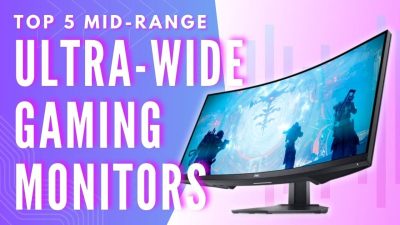📢 Disclosure: Some links on this page are affiliate links. As an Amazon Associate, I earn from qualifying purchases at no extra cost to you. Thanks for your support.
Which best vr headsets should you look out for:
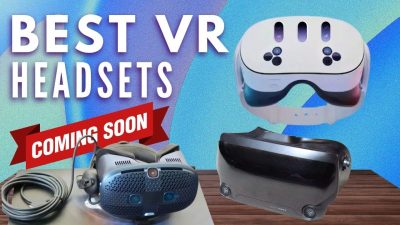
Virtual Reality is evolving faster than ever, especially after the popularity of the meta quest 3. But if you’re looking for the best VR headset that has full-body tracking, AI-powered avatars, or wireless high-end gaming, the next generation of vr headsets is set to introduce groundbreaking features that could change VR forever.
With some new vr headsets launching in late 2025 and 2026, the industry is addressing major concerns like battery life, wired connections, and graphical limitations. Let’s take a look at what’s next in VR and whether you should buy now or wait for the next big release.
The state of VR in 2025
VR tech has made significant strides, offering wireless headsets, high-resolution displays, and mixed-reality features. However, challenges still exist, including short battery life, with most headsets lasting only two to three hours before requiring a recharge, the continued reliance on cables and external sensors for high-end models which can be a pain, and the need for further graphical improvements to match the realism of high-end gaming PCs. The next generation of VR headsets, expected this year and 2026, aims to tackle these limitations while introducing new features that will take immersion to the next level.
| VR Headset | Display & Resolution | Refresh Rate | Tracking Type | Platform Compatibility | Battery Life | Price |
|---|---|---|---|---|---|---|
| Meta Quest 3 | LCD, 2064x2208 per eye | 120Hz max | Inside-out | Standalone, PC (via Link) | 2-3 hours | Check Price |
| PlayStation VR2 | OLED, 2000x2040 per eye | 120Hz max | Inside-out | PlayStation 5 | Wired | Check Price |
| Apple Vision Pro | Micro-OLED, 3660x3200 per eye | 100Hz max | Inside-out | Standalone (Apple ecosystem) | 2-3 hours (with external battery) | Check Price |
| Valve Index | LCD, 1440x1600 per eye | 144Hz max | External Base Stations | PC (SteamVR) | Wired | Check Price |
Meta Quest 3: Best standalone VR headset
Currently, the Meta Quest 3 is one of the most advanced standalone VR headset available. It does not require a PC or console and allows players to jump into VR instantly making it hugely popular. The Meta App seems to work well with the quest series too, allowing for simple purchases and a more streamlined experience to downloading apps through the headset. I’ve done quite a few reviews on the Meta Quest 3 but if you’d like to see if it’s worth getting over the Quest 2 check out this article on the Quest 3 vs Quest 2.
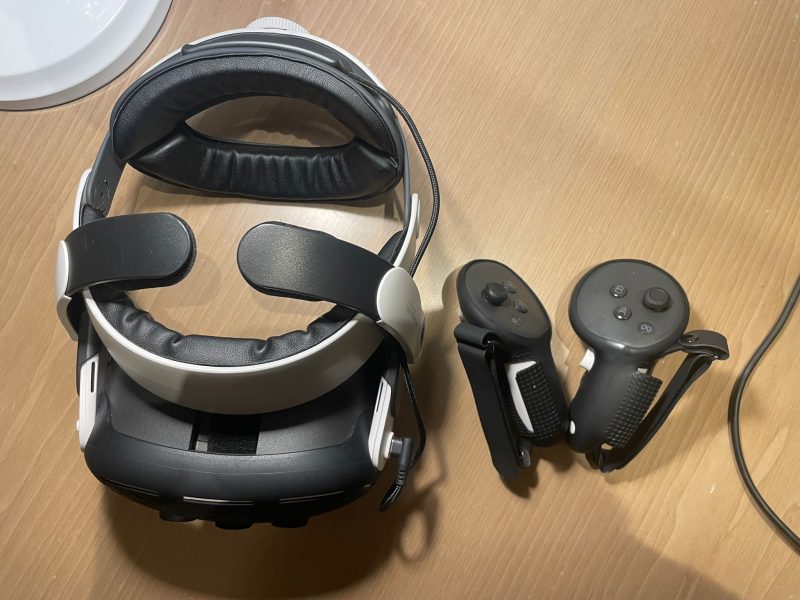
The quest 3 has brought alot of new people into the world of VR simply because it’s made it easier and more accessible for people to use and download apps. But do keep in mind, the app isn’t perfect and can something struggle to login and freeze. The Quest 3 is still going through alot of updates too, so it’s expected to experience glitches in the apps from time to time. Having said that, below are some of the pros and cons of the Quest 3.
Key Features:
- Full-color passthrough – Allows users to see the real world while interacting with virtual objects.
- Wireless and standalone – No need for external sensors or additional hardware.
- Improved visuals – Sharper graphics compared to the Quest 2.
- Plenty of accessories – Both aftermarket and from Meta.
Limitations:
- Battery life – Only 2-3 hours per charge.
- Not as powerful as PC VR headsets – Graphics, while improved, still lag behind high-end VR setups.
What’s next? Meta Quest 4
The Meta Quest 4 is rumored to feature inside-out full-body tracking, a lighter design, and a more efficient battery. If you don’t own a Quest 3 already and don’t mind waiting another year or so, you may want to hold off for the Quest 4, as it could bring significant improvements. That being said, for now the Quest 3 is one of the best VR headsets on the market.
PlayStation VR2: Premium console VR experience
Designed exclusively for PS5, PlayStation VR2 offers 4K HDR visuals, haptic feedback, and eye tracking for an immersive gaming experience.
Not everyone is using a Playstation thesedays, but if you are a PS console gamer the PSVR2 is one of the most immersive VR headsets out there. Yes, you have to have a wired connection to play it, but the graphical performance you can get makes it worth it. You can also get an adapter to use it for Steam VR aswell. If you’re looking for immersion with gaming, don’t mind the wired connection and already have a PlayStation, then this VR headset is an amazing choice. Check out the pros and cons:
Key Features:
- Impressive graphics – One of the best visual experiences in console VR.
- Advanced controllers – Haptic feedback enhances realism.
- Strong game library – Optimized for PlayStation 5.
Limitations:
- Requires a wired connection – Limits movement and immersion.
- PS limitations but they’re working on improving it for PC.
What’s next? PlayStation VR3 (rumored for 2026 but could be a longer wait)
The PS VR3 is expected to be completely wireless, eliminating one of the biggest drawbacks of its predecessor. There are also rumors that Sony is exploring cloud VR gaming, meaning you may not even need a PlayStation console in the future. That could really open the doors to more users who don’t have the PS5 Console.
Apple Vision Pro: A high-end mixed reality device
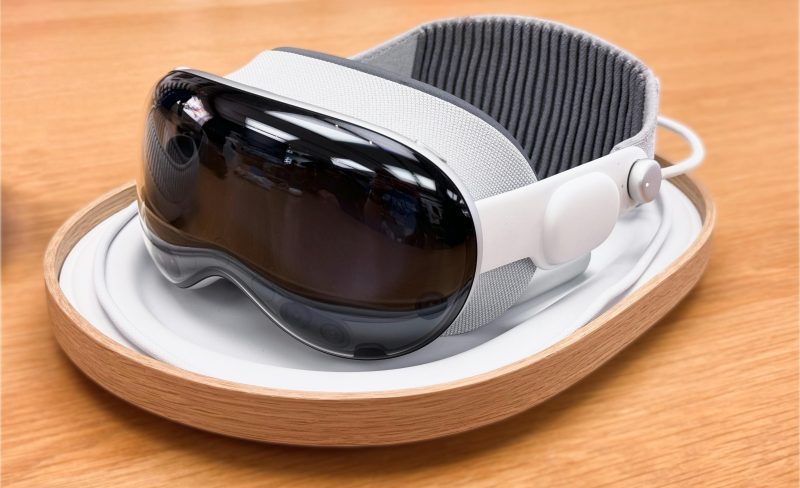
Unlike other VR headsets that focus on gaming, the Apple Vision Pro was designed primarily for productivity and media consumption. It features AI-powered eye tracking, ultra-sharp micro-OLED screens, and a controller-free interface. It’s the expense that puts alot of people off of these things. And the fact that they feel more like a test from Apple rather than a VR headset everyone can adopt. But the price lies heavily in the 1.25 inch Sony Semiconductor display, and like most Apple products, you can expect simple setups and intuitive an interface which is also a part of the appeal.
Key features:
- Best-in-class display quality – Crystal-clear visuals.
- Hand and eye tracking – No need for controllers.
- Premium build quality – Apple’s signature sleek design.
Limitations:
- Extremely expensive – One of the priciest VR headsets available.
- Limited gaming support – Not designed primarily for gaming.
What’s next? Apple Vision Pro 2
The Apple Vision Pro 2 is expected to be lighter, have a better battery, and feature a more powerful upgrade to the M5 processor. Apple is also rumored to be working on a more affordable version, which would be a much needed adjustment if Apple want to compete in the current VR space.
Valve Index: A high-end PC VR headset experience
- HEADSET ONLY. (MAY NOT INCLUDE HEAD STRAP ADJUSTMENT PAD). Controllers and base station purchased seperately
- 5x IMPROVEMENT over first-generation PC VR HMDs.
The Valve Index is widely considered one of the best PC VR headsets, featuring precise finger tracking with the Index Controllers, a wide field of view, and ultra-smooth visuals. It has an impressive 144 Hz refresh rate which is even better than the PSVR 2 at 120 Hz, but due to its higher price and wired connection, it’s not as popular as the more affordable quest series from Meta.
It’s also aging now, as it was released back in 2019 and many people are hoping for an update, however no one is certain about that as writing this article. Another thing that’s not talked about so often is the weight, at 809g with headstrap, it’s actually a heavy piece and that may put some people off as well.
Key features:
- Comfortable design – Designed for long play sessions.
- Industry-leading tracking – Best-in-class precision.
- High refresh rate – Ensures smooth gameplay.
Limitations:
- Requires external sensors – Setup can be complex.
- Wired connection – Limits mobility and is heavy.
- Expensive and requires a powerful gaming PC.
What’s Next? Valve Steam Frame
Valve has officially announced its next-generation VR headset, the Valve Steam Frame, set to release in early 2026. Unlike the Valve Index, it won’t require external base stations or a wired PC connection. Instead, the Steam Frame will function as a powerful standalone headset while still supporting PC-VR through wireless or optional tethered modes. If Valve delivers on its vision, this could become one of the most important VR launches in the coming years.
Note: Product images, details, and descriptions may change as listings update. Information provided is for reference only; please verify current details on the product page.
Future VR innovations: What’s coming in 2025 and 2026?
Several unexpected players may shake up the VR market:
It may not just be Apple and Meta Quest making the best vr headsets in 2025. Microsoft is reportedly developing an Xbox-compatible VR headset, potentially powered by Meta’s Horizon OS, which would introduce VR gaming to Xbox users for the first time. Meanwhile, Google and Samsung are collaborating on a mixed-reality VR headset designed as an Android-based alternative to the Apple Vision Pro. Meta are also keeping busy despite having just release the quest 3s, they’re working on the Quest Pro 2, a high-end mixed-reality headset focused on work applications, hyper-realistic avatars, and AI-powered experiences.
Should you buy a VR headset now or wait?
If you already own a Quest 3, PS VR2, or Apple Vision Pro, there’s no need to change or upgrade as they are pretty much the best VR headsets out now. However, for those with older VR headsets like the Quest 2, or those who are not into VR yet, getting a headset like the Quest 3 is a big upgrade.
But if you’re not in a rush, waiting for the next generation may be worthwhile, as upcoming devices will introduce significant advancements such as full-body tracking for more immersive movement without extra sensors, wireless gameplay eliminating the need for cables or external tracking systems, and AI-powered VR experiences that enhance realism in interactions and avatars. With 2026 and 2027 set to bring major improvements, the VR environment is looking pretty exciting right now.
And the new Samsung XR and Steam Frame headsets only add to the excitement within the space. Keep reading below to find out more about the new #Samsung XR headset and see how it compares to the Meta Quest 3.
Samsung XR headset
Samsung is set to make a significant return to the immersive tech space with this Samsung XR headset, an upcoming mixed reality device. Codenamed Project Moohan, this XR headset is scheduled for release literally anytime now. This device is positioned to compete directly with high-end offerings like the Apple Vision Pro and Meta Quest 3.
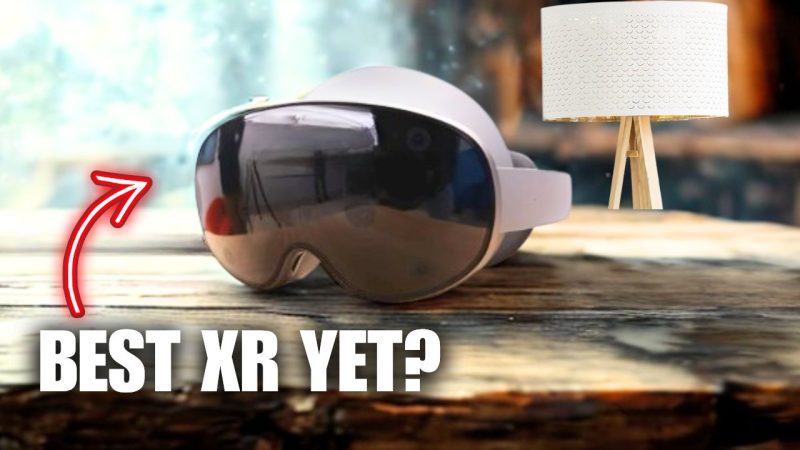
This Samsung XR headset is the result of Google teaming up with Samsung, and in a recent demo (shown at Google I/O), Google demonstrated how you can use it to interact directly with AI. There’s no need to type into AI like ChatGPT, you can speak directly to the headset, and it will provide on-screen answers. This is quite similar to the smart glasses I reviewed in a previous video, where you can use AI to help translate languages in real time. You can read all about that here.
But the difference with this new Samsung and Google headset is that it can provide you with immersive, detailed visuals on request. This was demonstrated in a navigation trial where the AI brings up maps and Google Earth visuals. The selling point is that the AI can interpret what you’re seeing in context, so you can directly ask it questions about your surroundings.
Similar to high-end smart glasses like the RayNeo X2, this headset can identify and interact with real-world items. For example, you can ask it questions about things you see; such as books, movies, or objects, and it will help you with your query.
It seems like they’re really pushing the concept of having AI as an assistant to enhance what you see and hear in the real world. In theory, this is an advanced XR product that not only augments reality but blends in AI support in a way most companies are now aiming for.
Let’s take a quick look at the hardware this Samsung XR headset is packing:
- Processor: Powered by Qualcomm’s Snapdragon XR2+ Gen 2 chipset, delivering enhanced CPU and GPU performance over previous generations.
- Display: Equipped with 4K Micro-OLED panels, offering high-resolution visuals for immersive experiences.
- Tracking: Features both eye and hand tracking capabilities, enabling intuitive interaction within virtual environments.
- Design: Includes a removable light shield for adjustable immersion levels and an external tethered battery pack to reduce on-head weight, enhancing comfort during extended use.
Why choose this Samsung XR headset over smaller XR smart glasses?
The easy answer is hardware and added features. While it’s packed with XR capabilities, this is still a powerful VR device too, it’s a hybrid of both.
And because it’s an Android headset, it has two major system features: Gemini and the Play Store. This means phone and tablet apps from the Play Store will run on the headset. The idea is that any Android XR headset will be able to connect to the Play Store and run your favourite apps. Samsung has done a solid job integrating the Play Store in general, most apps appear to run without issues.
There are also special apps designed specifically for XR devices, like YouTube, Zoom Workspace, and other social apps. These also work well on the Samsung headset.
But it’s the Gemini AI integration where things get particularly interesting. That seemed to be the main focus in the Google demo. The ability to converse naturally with AI and collaborate visually creates a whole new XR experience. Gemini is multimodal, meaning it can understand text, voice, and visual input, including what you’re seeing through the headset in certain contexts.
That’s incredibly exciting, and a bit unsettling, especially if you’re privacy-conscious. But what it means is that you could, for example, ask Gemini about something in front of you, and it could give you helpful answers, similar to what it might say if you uploaded a photo of the same item. I can see how this could seriously boost productivity, especially since you can talk to Gemini within apps, getting guidance and responses in real time.
This is a huge leap compared to competitors like the Meta Quest or Apple Vision Pro, which currently don’t offer this level of built-in AI functionality. That said, don’t expect the Samsung headset to be without drawbacks. Early testers have reported some lag with pinch-to-interact gestures when summoning the AI. And since Gemini is still evolving, the overall experience isn’t as refined as it could be yet. Some users report mild cognitive fatigue after long usage sessions.
Just keep in mind: this headset is still in active development. Hopefully, by the time the final version launches, many of these kinks will be worked out.
Should you throw away your Meta Quest 3?
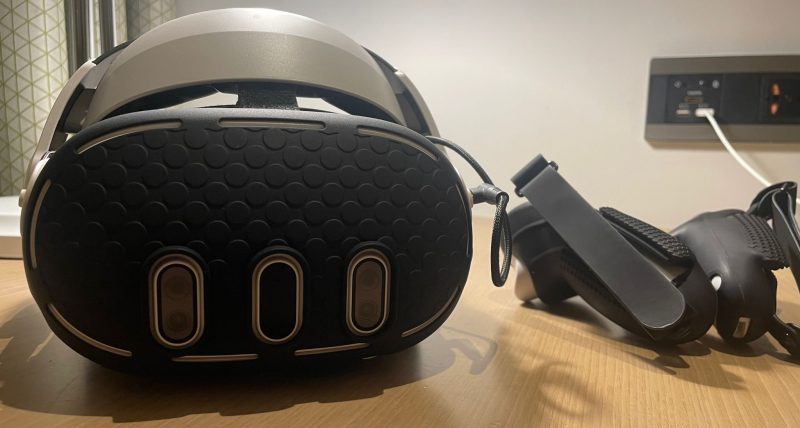
Absolutely not. When it comes to VR gaming, the Meta Quest 3 remains one of the best out there. Its hardware is excellent for standalone VR, and the Meta app, despite a few bugs, is still incredibly useful. Quest 3 offers fantastic gameplay without needing a PC.
And if it’s AI features you’re after, there are already some options on the market. As I mentioned earlier, a new wave of XR glasses is starting to appear. No, they don’t have the power of the Samsung XR headset, and they’re not Android-based… yet. But I imagine we’re not far off from Android-compatible glasses hitting shelves.
Rabbit R1 Voice-Activated AI Assistant
There are also AI gadgets you can buy now that make AI easier to use in everyday life. For example, the Rabbit R1 Voice-Activated AI Assistant includes:
- An AI voice recorder with transcription and summarization
- Built-in camera
- Real-time language translation
These kinds of tools are aiming to make AI interactions simpler and more practical for daily use.
We hope this article helped you find the best VR headset. If you’re on the lookout for a new laptop, make sure try our Laptop Finder Quiz. Otherwise, check out our similar tech reviews on the links below.



